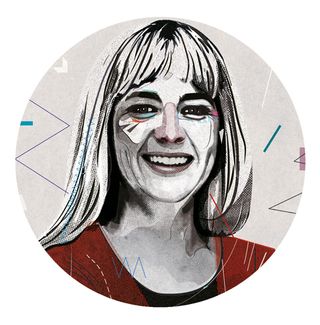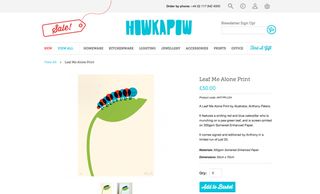Screenprinting: is it worth it?
Howkapow’s Cat How explores the merits of producing and selling limited-edition screenprints of your work, compared with their more economical digital counterparts.

In our physical shop, a common question customers ask - quizzically, brows furrowed, holding up a print in either hand - is, "Why
is this print double the price, when both are the same size?" We explain that one is a screenprint - hand-pulled in a limited run of just 10 - while the other is a standard digital 'giclée' print, pumped out in
a limitless run on an industrial printer.
Some customers understand this distinction, opting for the screenprint as an investment piece. Others will shrug, think the price gap ludicrous and go for the value option, preferring the image itself over the exclusivity of the other.
The key is knowing your market. Once you know this, it can help you decide where to sell
Each decision is a valid one from the point of view of the customer, but as the creator it's important to understand this distinction if you want your work to sell. The key is knowing your market: who do you want to sell to? Can they afford the prices you want to charge, and do they understand why you are charging those prices in the first place? Once you know this, it can help you decide where to sell.
With a screenprint - handmade, signed, titled and dated by you in a small run - you can, and should, charge a premium price. But this only makes sense if it's sold somewhere people can understand the quality and skill required to create it. Galleries and design shops are ideal, as people can really see and feel the quality, and expect it to be that price because of the environment. In the past we sold a lot of screenprints in Howkapow's physical shop.

In contrast, we've found digital prints sell better online - attracting an audience who are less fussy about provenance and skill, and more interested in a nice image for their wall at an affordable price. Market stalls are good selling grounds too, as lower value products tend to sell best here.
Artist markets are also an ideal testing ground to ask your customers face-to-face what they want. Do they mind paying more for a screenprint or are they less fussed about this and just after a good price? Explain to them the process and it could be that you change their minds.
Some might consider digital printing a sell-out, but it's a great way of expanding your work onto other products, such as homewares and ceramics, and reaching a different audience. Hand-printing, on the other hand, elevates work to 'art' status.
Hand-printing elevates work to 'art' status
Quality versus quantity comes into question here. With digital, you can sell your work at a lower, more competitive price by printing large runs, but you lose the uniqueness a screenprint has, as well as control over stock and colour matching. Saying that, I've seen some superb digital prints that walk all over screenprinted efforts.
Ultimately it's the customer who decides - and who buys. Figure out which process works best for you as a designer, and you're already halfway there.
Words: Cat How
Cat How studied English literature at Bristol University and then communication design at Central Saint Martins. In 2010, Cat and Roger How set up Howkapow, a colourful design shop promoting the work of independent creatives.
This article originally appeared in Computer Arts issue 222.
Liked this? Read these!
- Get started with screen printing
- 10 inspiring examples of screen printing
- Create a perfect mood board with these pro tips
- The ultimate guide to logo design
- Our favourite web fonts - and they don't cost a penny
Would you happily pay more for a limited-edition, hand-made print? Let us know in the comments.

Thank you for reading 5 articles this month* Join now for unlimited access
Enjoy your first month for just £1 / $1 / €1
*Read 5 free articles per month without a subscription

Join now for unlimited access
Try first month for just £1 / $1 / €1
Get the Creative Bloq Newsletter
Daily design news, reviews, how-tos and more, as picked by the editors.
The Creative Bloq team is made up of a group of design fans, and has changed and evolved since Creative Bloq began back in 2012. The current website team consists of eight full-time members of staff: Editor Georgia Coggan, Deputy Editor Rosie Hilder, Ecommerce Editor Beren Neale, Senior News Editor Daniel Piper, Editor, Digital Art and 3D Ian Dean, Tech Reviews Editor Erlingur Einarsson and Ecommerce Writer Beth Nicholls and Staff Writer Natalie Fear, as well as a roster of freelancers from around the world. The 3D World and ImagineFX magazine teams also pitch in, ensuring that content from 3D World and ImagineFX is represented on Creative Bloq.
